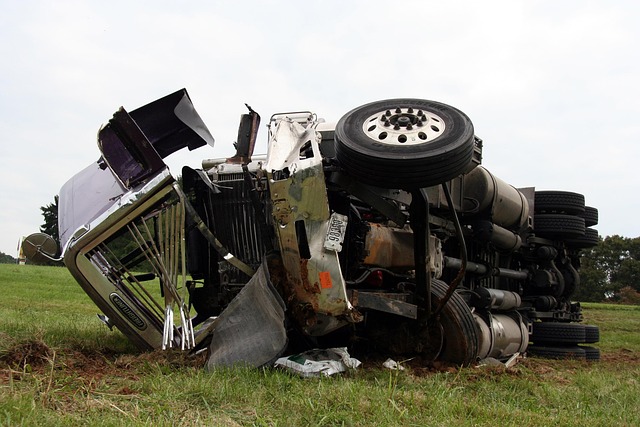Looking to register your car in California? This comprehensive guide walks you through the process step-by-step. To start, ensure your vehicle meets state eligibility requirements. Gather essential documents like proof of ownership and insurance. You can either visit a local DMV office or utilize online services for convenience. After completing the Vehicle Registration Application Form, verify your vehicle’s unique VIN (DMV vin verifier) and pay the required registration fees. Simplify car registration in California with this easy-to-follow breakdown.
- Understand Eligibility Requirements for Car Registration
- Gather Necessary Documents for Car Registration
- Visit Your Local DMV Office or Use Online Services
- Complete the Vehicle Registration Application Form
- Verify VIN and Pay Registration Fees
Understand Eligibility Requirements for Car Registration

Before you begin the registration process, it’s crucial to understand the eligibility requirements set by the California Department of Motor Vehicles (DMV). To register your car in California, your vehicle must meet specific criteria. One key step is ensuring that your car has a valid and accurate Vehicle Identification Number (VIN) verified through a trusted source like the DMV or a mobile VIN verification service. The VIN is a unique code that identifies your vehicle’s make, model, and year, and it plays a vital role in the registration process.
Additionally, your car must be in safe operating condition, pass an emission test if required, and have the appropriate insurance coverage. It’s also essential to gather all necessary documents, such as proof of ownership, a valid driver’s license, and any applicable fees. Using a mobile VIN inspection or mobile VIN verifier can streamline this process by providing immediate verification of your vehicle’s details, ensuring a smoother registration experience.
Gather Necessary Documents for Car Registration

Before you begin the registration process, ensure you have all the required documents. The California Department of Motor Vehicles (DMV) requires a range of information to verify your vehicle’s ownership and details accurately. Key among these is the Vehicle Identification Number (VIN), which acts as a unique fingerprint for your car. Use a DMV VIN verifier or mobile vin verification service to gather this crucial data, as it plays a vital role in the registration process.
Additionally, you’ll need proof of insurance, vehicle inspection certificates (if applicable), and identification documents such as a valid driver’s license or state-issued ID card. For out-of-state vehicles, you might require additional paperwork like a certificate of title from the previous state of registration. Having these documents ready ensures a smoother process at the DMV and helps avoid any delays or complications during car registration in California.
Visit Your Local DMV Office or Use Online Services

When registering your car in California, one of the initial steps involves verifying your vehicle’s unique identifier – the Vehicle Identification Number (VIN). The DMV offers two convenient methods for this process. You can visit your local Department of Motor Vehicles (DMV) office and have them perform a VIN verifier check. Alternatively, the DMV provides online services where you can input your VIN to initiate the verification process remotely. If accessibility or time is a concern, consider utilizing a mobile vin inspection or mobile vin verification service for added convenience.
For in-person visits, a DMV representative will access their system using your provided VIN to ensure the vehicle’s history aligns with its intended use and ownership. Online, you’ll be guided through a series of steps to enter your VIN, which will then be cross-referenced against state records. Both methods are reliable ways to complete the VIN verification required for car registration in California.
Complete the Vehicle Registration Application Form

To begin the registration process, drivers in California must complete the Vehicle Registration Application Form (also known as Form DMV-123). This form requires essential information about the vehicle, including its make, model, year, and unique Vehicle Identification Number (VIN). The VIN is a crucial piece of data that allows the DMV to verify the vehicle’s history and ensure it meets all necessary standards.
It’s important to note that many individuals opt for a mobile vin inspection or use a vin verifier tool, such as those offered by the Department of Motor Vehicles (DMV), to streamline this process. By entering the VIN into these tools, you can quickly access detailed vehicle information, including its current and past owners, maintenance records, and any reported accidents, making the registration application smoother and more accurate.
Verify VIN and Pay Registration Fees

Before proceeding with the registration process, it’s crucial to verify your vehicle’s unique identifier – the Vehicle Identification Number (VIN). A DMV VIN verifier is a reliable tool that enables you to cross-reference and confirm the authenticity of this 17-character code. This step is essential for ensuring the accuracy of your vehicle’s records, which can be easily validated through an online or mobile VIN inspection.
By utilizing a mobile VIN verification service, you can conveniently access real-time data about your car’s history, including its previous owners and maintenance records. This information is critical when registering a used car, as it helps to uncover any potential issues or discrepancies that could impact the registration process. Thus, ensuring a smooth transition towards official vehicle registration in California.
Registering a car in California is a straightforward process that requires understanding the eligibility criteria, gathering essential documents, and completing specific steps. By visiting your local DMV office or utilizing online services, you can efficiently navigate the vehicle registration application form. A crucial step involves verifying the Vehicle Identification Number (VIN) using a trusted dmv vin verifier to ensure accuracy. Once all requirements are met and fees are paid, you’ll be on your way with a registered vehicle, ready to hit California’s roads legally.
